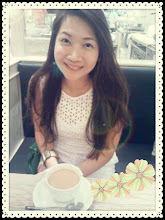
A glass so full of elegance, but yet so full of vibrancy! You drift as you allow the bubbles of energy and joy to run through your body as it enters so excitingly through your tongue. Love the dazzle of this world of wine because one touch of it may just lift you out of your burdened world. Enter with me to find out the truth of Champagne that many fail to see…
You love the bubbles and so do your friends. And many a times we thought Champagne is what we’re always having as we step into a party and get offered a glass of bubbly drink, or rather bubbly wine. Nice Champagne! Well, probably not so. It might well be just a nice sparkling wine.
Champagne (shahm-PAHN-yeh), where many types of champagne are made is actually the name of a region in France where these wines originate. So if you see a bottle of sparkling wine from New York, please don’t mistake it as Champagne. Just refer it to just sparkling wine will do. =)
And by now you probably already have the knowledge of knowing that many wines are termed and named after the grapes that they are made of. So how about Champagne? Oh sounds pretty easy. That will probably be “Champagne Grapes”! Unfortunately, no prize for saying that because nope, sorry Champagne is not made from “Champagne Grapes”. In fact, Champagne is actually made from a blend of 3 grapes that you should find familiar with. They are Pinot Noir, Pinot Meunier, and Chardonnay. From the blend, you might be wondering now, how is it that wines from these same grapes are still but yet Champagne is bubbly. Thanks to “Methode Champenoise”, this being the Champagne making process. While sparklers from France tend to indicate the winemaking process on the front label, sparklers from outside of France tend not to do so. However, you might be able to steal some clues by turning to the back label of the bottle.
The creation of bubbles in all sparklers basically goes through two levels of fermentations. This comprises of firstly, fermenting the grape juice and letting it turn into still (non-sparkling) wine. The latter level involves turning the wine bubbly. If you are interested in peeping deeper into the roots of Champagne making, I recommend this website I came across.
http://www.thewinedoctor.com/regionalguides/champagne.shtml
Knowing the process may have helped you appreciate the bubbles more, but this is definitely not the end of the list you need to acquire should you decide to understand this beautiful creation. “What else?” you may ask. Well, some tips on the classification of Champagne might be useful. Most of the champagne you can easily reach out to would belong to those that are brut or extra dry. This would go perfectly with food. But what if your mood wished for a sweeter taste? Hmm, then demi-sec or sec might suit your preference. Here’s how you can differentiate while making your purchase (as extracted from the book “The Downtown Girl’s Guide to Wine”):
Demi-sec = really sweet, dessertlike
Sec = sweet, but not as sweet as demi-sec
Extra dry = a little sweet
Brut = pretty dry
Ultra or extra brut = as dry as you can get
Want to know why some champagne are so highly priced while some others are not? One of the contributing factors might be due to the fact that the bottle you’re holding is vintage Champagne. These in short are usually wine made from the best grapes from a single vintage. Another possible answer might be that the Champagne you are eyeing for is made from a boutique, specialized winery. In such cases, these boutiques produce high quality wines at a limited quantity. Therefore, its products tend to be priced higher to help it stay afloat financially. Or another highly possible reason might be that the bottle you’re holding is just a sparkling wine and not really Champagne at all! But despite these reasons and many more accompanying ones, these prices might not guarantee its quality sometimes.
And talking about sparklers as a whole, while prices are never really indicative of the quality, why not go for a safer guide? Bigger is never always better? Well, hear the protest of the bubbles because the size of the bubbles does count. Try out a bottle of cheaply priced $8 sparkler and a bottle of decent Champagne and you’ll understand what I mean.
The glam and excitement of sparkling wine and Champagne in particular is never limited to just this page. The distinction in every bottle is a wonderful creation in itself. The bubbles, the combination of taste and its very individualized outstanding appearance is always unique. You might not have tasted one, but be sure to enjoy the process right from the very beginning when you start choosing the bottle you want.
And yes, float with the bubbles but mistake them not! *Enjoy the PoP*
P.S. The above information is gathered from:
- http://bostonphoenix.com.- Uncorked
- http://www.thewinedoctor.com – Wine making process
- “The Downtown Girl’s Guide to Wine” by Megan Buckley and Sheree Bykofsky



0 comments:
Post a Comment